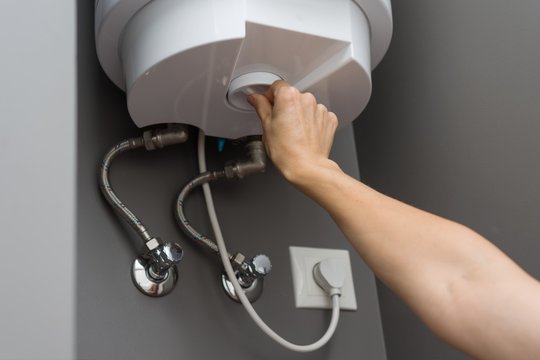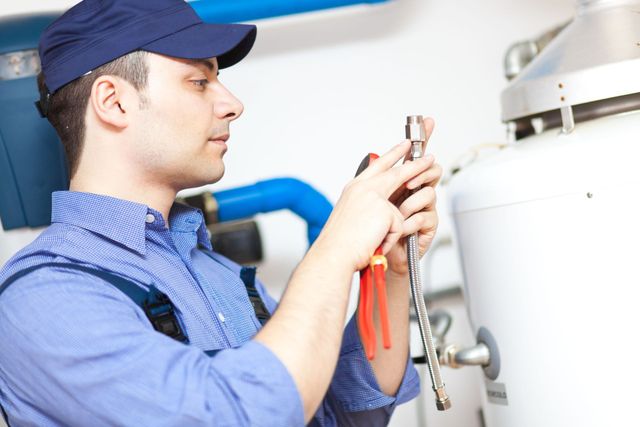Effective Techniques for Caring for Your Home's Hot Water SystemWays to Maintain Your Home's Hot Water System Functioning Well
Effective Techniques for Caring for Your Home's Hot Water SystemWays to Maintain Your Home's Hot Water System Functioning Well
Blog Article
Have you been interested in tips involving Tips For Maintaining Your Hot Water Heater?

Warm water is important for everyday convenience, whether it's for a refreshing shower or washing meals. To guarantee your hot water system runs efficiently and lasts much longer, routine maintenance is essential. This short article provides sensible ideas and understandings on exactly how to preserve your home's warm water system to avoid interruptions and pricey repair work.
Intro
Keeping your home's hot water system may appear daunting, but with a couple of straightforward actions, you can ensure it operates smoothly for several years ahead. This guide covers everything from understanding your hot water system to DIY maintenance tips and knowing when to hire professional help.
Significance of Keeping Your Warm Water System
Normal upkeep not only extends the lifespan of your hot water system but also ensures it runs successfully. Disregarding upkeep can bring about lowered effectiveness, greater energy bills, and even early failing of the system.
Indicators Your Warm Water System Requirements Maintenance
Knowing when your warm water system requires focus can protect against significant problems. Watch out for signs such as inconsistent water temperature level, unusual noises from the heating system, or rusty water.
Recognizing Your Hot Water System
Prior to diving right into maintenance jobs, it's useful to comprehend the basic elements of your warm water system. Generally, this includes the hot water heater itself, pipes, anode rods, and temperature level controls.
Monthly Upkeep Tasks
Normal month-to-month checks can assist capture minor concerns before they rise.
Flushing the Hot Water Heater
Flushing your hot water heater eliminates debris accumulation, boosting effectiveness and lengthening its life.
Checking and Changing Anode Rods
Anode rods stop deterioration inside the tank. Checking and replacing them when worn is crucial.
Checking and Adjusting Temperature Setups
Adjusting the temperature level setups guarantees optimum performance and security.
Do It Yourself Tips for Maintenance
You can do several maintenance jobs yourself to keep your warm water system in top condition.
Looking for Leakages
Frequently evaluate pipes and connections for leakages, as these can lead to water damage and higher expenses.
Checking Stress Relief Valves
Checking the stress relief valve guarantees it operates correctly and avoids extreme stress buildup.
Protecting Pipelines
Shielding hot water pipes decreases warmth loss and can conserve energy.
When to Call a Professional
While do it yourself upkeep is valuable, some concerns require professional know-how.
Complicated Concerns Calling For Professional Help
Examples consist of significant leakages, electric troubles, or if your water heater is regularly underperforming.
Routine Expert Upkeep Perks
Specialist upkeep can consist of thorough evaluations, tune-ups, and guaranteeing compliance with security requirements.
Verdict
Normal upkeep of your home's warm water system is crucial for performance, longevity, and cost savings. By following these tips and knowing when to seek professional help, you can ensure a reliable supply of hot water without unexpected disruptions.
How to Maintain an Instant Hot Water Heater
Before tinkering with your hot water heater, make sure that it’s not powered on. You also have to turn off the main circuit breaker and shut off the main gas line to prevent accidents. Also turn off the water valves connected to your unit to prevent water from flowing into and out of the appliance. 2. When you’re done, you have to detach the purge valves’ caps. These look like the letter “T” and are situated on either side of the water valves. Doing so will release any pressure that has accumulated inside the valves while at the same time avoid hot water from shooting out and burning your skin. 3. When the purge valves’ caps are removed, you have to connect your hosing lines to the valves. Your unit should have come with three hoses but if it didn’t, you can purchase these things from any hardware or home repair shops. You can also get them from retail stores that sell water heating systems. Read the user’s manual and follow it to complete this task properly. When the hosing lines are connected, open the purge port’s valves. 4. You should never use harsh chemical cleaners or solutions when cleaning your unit. Make use of white vinegar instead. It should be undiluted and you’ll probably use about 2 gallons. 5. Now flush your water heater. This task should probably take about 40 minutes. We can’t give you specific directions for this because the procedure is carried out depending on the type, model and brand of your heater. With that being said, refer to the user’s manual. 6. When you’re done draining the unit, you have to turn off the purge port valves again. Remove the hosing lines that you earlier installed on each of the water valves. Put the valve caps (purge port) back in their respective places and be very careful so as not to damage the rubber discs that are found inside these caps. 7. Now that everything’s back in place, check your user’s manual again to find out how to reactivate your water heating system. 8. Once it is working, turn one of your hot water faucets on just to let air pass through the heater’s water supply pipes. Leave the tap on until water flows smoothly out of it. https://www.orrplumbing.com/blog/2014/september/how-to-maintain-an-instant-hot-water-heater/

Do you enjoy more info about Water Heater Maintenance Tips You Can't Afford to Forget? Try leaving a remark down below. We will be glad to listen to your thinking about this review. In hopes to see you back again later on. Make sure you take the time to share this content if you enjoyed it. Thanks a bunch for being here. Come back soon.
Book Services Report this page